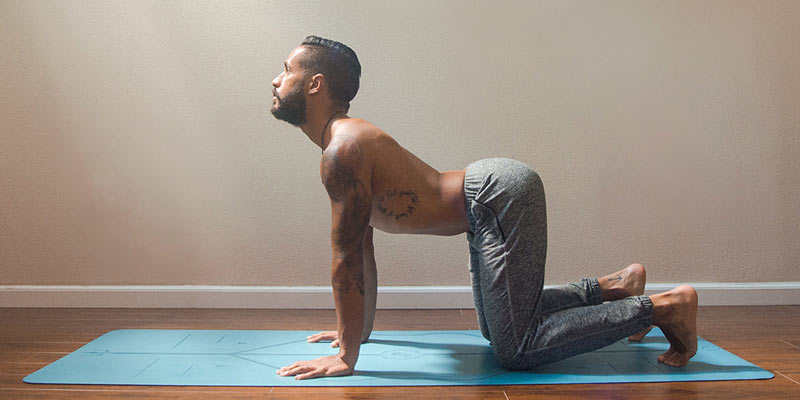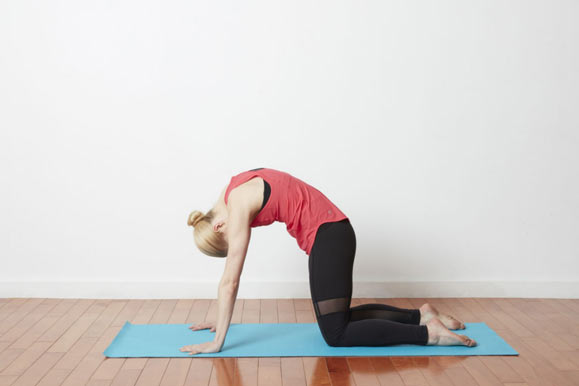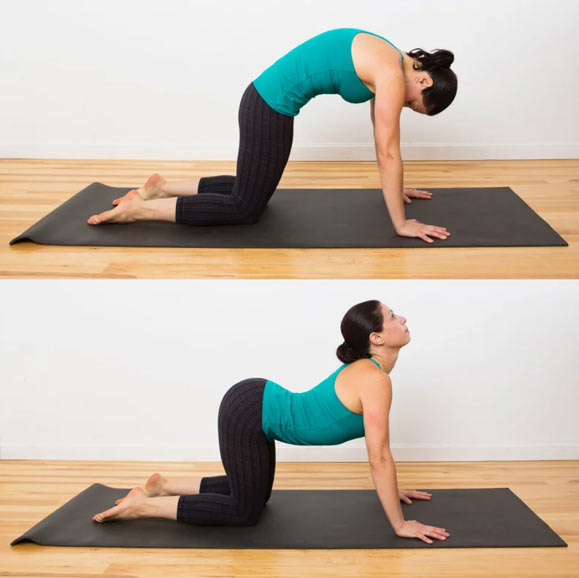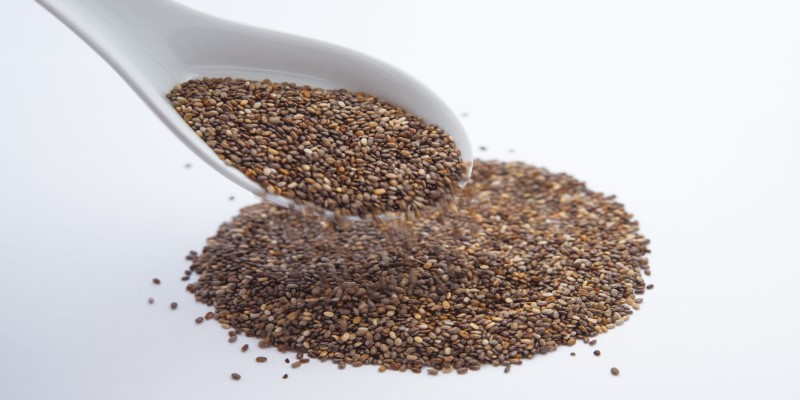
The cat-cow stretch, also known as Chakravakasana, is a fundamental yoga posture that provides a gentle back and core warm-up. When performed correctly, it gently massages the spine, opens up the torso, and promotes blood flow. While it may look simple, proper alignment is key to receiving the full benefits. This beginner's instruction will show you how to perform this adaptable stretch correctly.

What is the Cat-Cow Stretch?
The cat-cow stretch is an easy backbend and forward fold combo designed to mobilize the spine. The name comes from the visually similar movements of a cat arching and hollowing its back, followed by a cow gently dropping and lifting its head. When performed rhythmically, this movement creates a wave-like motion along the spine as you move from a backbend to a forward fold. The stretch targets the full back body, including the middle and lower back muscles, abdomen, and neck.
Benefits of Cat-Cow Stretch
This fundamental yoga posture has many excellent benefits:
- Warms up the spine: The repetitive motion gently increases mobility and blood flow to the vertebrae and back muscles.
- Stretches the torso and neck: The dual motions of arching and rounding provide a mild stretch along the entire backside of the body.
- Massages abdominal organs: The wave-like movement gently compresses and releases organs in the core.
- Stimulates digestion: Through its massage-like effect on the abdomen, it can aid digestion and relieve constipation.
- Releases tension: The rhythmic pattern specifically eases stress in the neck and back by relaxing tense muscles.
- Gets the body ready for exercise: It lengthens the spine and back muscles to prime the body for increasingly difficult poses and forward motion.
Proper Form and Alignment
Since the cat-cow targets the back body, proper spinal alignment is crucial. Follow these alignment tips:
Start on all fours with a flat back
Have a neutral spine, and start on your hands and knees. With your fingers spread wide, firmly dig a hole through your knuckles. With your feet level on the floor, place your knees directly beneath your hips. Activate your core, extend your neck slightly forward, and pull your shoulder blades down your back. The initial "tabletop" position is this.
Initiate movement from the spine.
As you start the sequence, lead all movement from your spine, not your hips. To move into the cow stretch, drop your belly toward the floor, lifting your heart and tailbone up as you inhale. Then start cat stretch by rounding your spine toward the ceiling, dropping your head down as you exhale.
Avoid overarching
Overarching the back too dramatically puts excessive pressure on the lumbar spine. Keep the movement subtle by focusing on lifting and lowering the sitting bones rather than pushing ribs forward and backward.
Engage core throughout
Keep drawing a low belly in and up to support the lower back throughout. Avoid letting the belly/mid-back sag as you transition between movements.
How to Do the Cat-Cow Stretch

Once you understand the proper form, follow these step-by-step instructions:
Start on all fours
Wrists are under shoulders, knees are under hips, and toes are tucked as you come to a hands and knees position. Extend your fingers widely. To activate the core, bring the navel in toward the spine.
Inhale into cow stretch
As you inhale slowly through your nose, drop your belly down. Lift chin and chest up, shifting shoulder blades down back. Maintain a gentle arch, lifting sitting bones and tailbone up. Avoid overarching lower back.
Exhale into cat stretch.
Drop your head and curve your spine upward toward the ceiling as you release a deep breath through your mouth. Tuck chin towards the chest. Shift sitting bones and tail up towards the ceiling. Complete full exhalation.
Repeat 5 to 10 times.
Continue flowing between the cow and cat stretches with your breath. Move slowly and fluidly. Complete 5 to 10 full breath cycles.
Return to neutral
After your last repetition, return to the starting “tabletop” position on your next exhale with a neutral, flat back. Take a few breaths here before moving on.
Tips for All Levels
Use these tips to modify for your level or to go deeper:
Beginners
If you are new to the stretch, move slowly through just a few repetitions as you learn the technique. Don't overarch or round too intensely. Keep knees directly under hips for stability. Rest in the child's pose anytime.
Intermediate
Build endurance by flowing steadily through 8-10 rounds. Expand the range of motion slightly on each arch and round. Engage the core deeply to stabilize. Move shoulders away from ears.
Advanced
Warm up quickly, then hold the cow or cat stretch for five full breaths on each round. Or move one limb at a time to increase balance and stability challenges. Add neck stretches if desired.
Common Mistakes
Avoid these common misalignments:
- Overarching or rounding the spine too intensely
- Pushing ribs forward and back instead of moving from the spine
- Letting belly/mid-back sag down in transitions
- Shifting weight side to side as hips sway
- Dropping head straight down rather than tucking chin in first
- Holding breath instead of using Ujjayi breath
Modifications and Variations
Customize your practice with these popular modifications:
- Easier: Remove wrist pressure by resting on forearms. Knees can be wider than hips if needed.
- More backbend: From cow, lift one leg straight back for more chest and hip opening.
- More core/balance: Lift the opposite arm and leg on each round.
- Add neck stretch: Gently roll head side to side with shoulders relaxed.
- Rest anytime in a child's pose with hips over heels, arms long, and head down.
Conclusion
This beginner's guide covered everything you need to know to perform the cat-cow stretch safely and effectively. By moving rhythmically from a backbend to a forward fold, this simple yoga sequence warms up the spine, stretches the torso, stimulates digestion, and relieves tension.
Master proper alignment by initiating the wave-like motion from your spine, avoiding overarching, and keeping your core engaged. Build endurance over time and add variations to customize your practice. When performed correctly, this versatile stretch leaves you feeling supple and energized.



